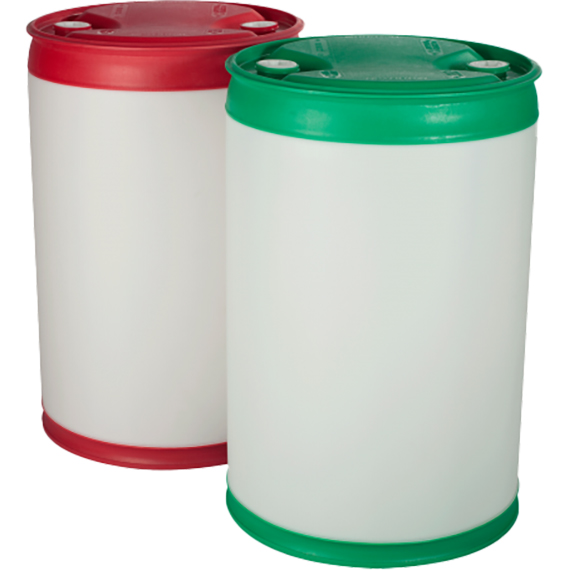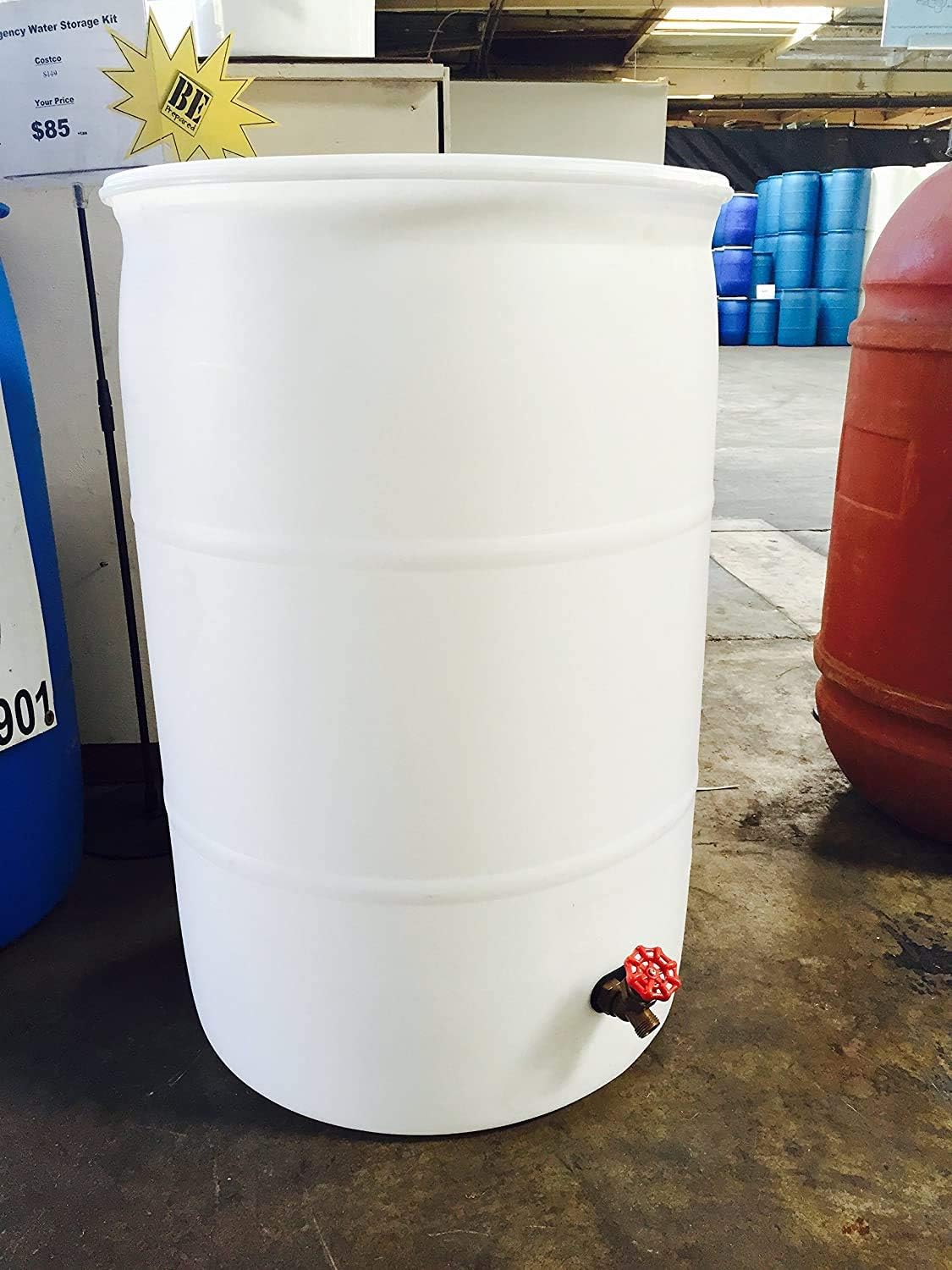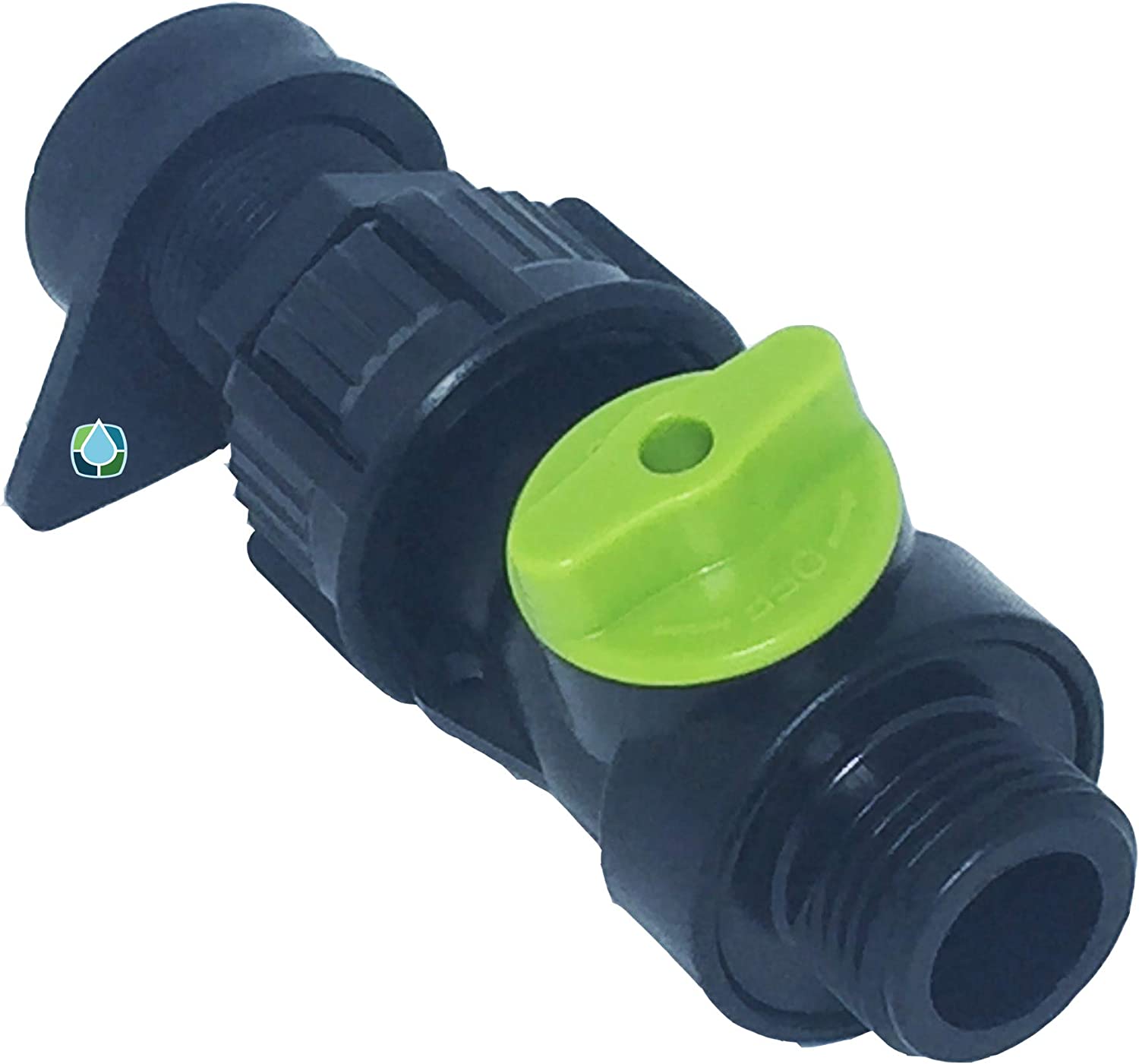OK, pictures!
Here's the general setup, with the barrel flipped "upside down":

Here's what's behind there now:

Here's the gap where I would attach the spigot:

So it would emerge upside-down, sort of. Thus why I thought maybe a 45˚ elbow, a short length of pipe, then another 45˚ elbow to bring it level again, and attach the spigot on the end of that:

One issue I've noticed is that the hole-end of the barrel has sort of a convexity to it, so it doesn't quite sit level:

In the above picture you can even see the gap between the barrel and the blocks caused by the curve of the barrel-end. Hopefully that resolves when the barrel is full...if not then I'm not sure this solution will work.
As for overflow, I sketched up what I had in mind:

The rough red line to the left represents the brick wall; the blue represents a short length of hose, connected to the barrel through the flange (small white rectangle). The vertical gray rectangles next to the brick wall represent the downspout. You can see I would remove just a small section in the middle, rather than everything below the downspout elbows -- if I can secure the top of that lower section.














